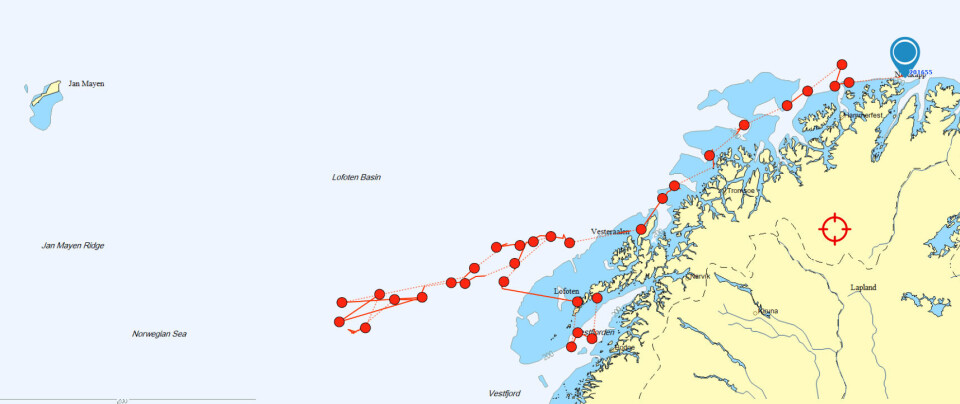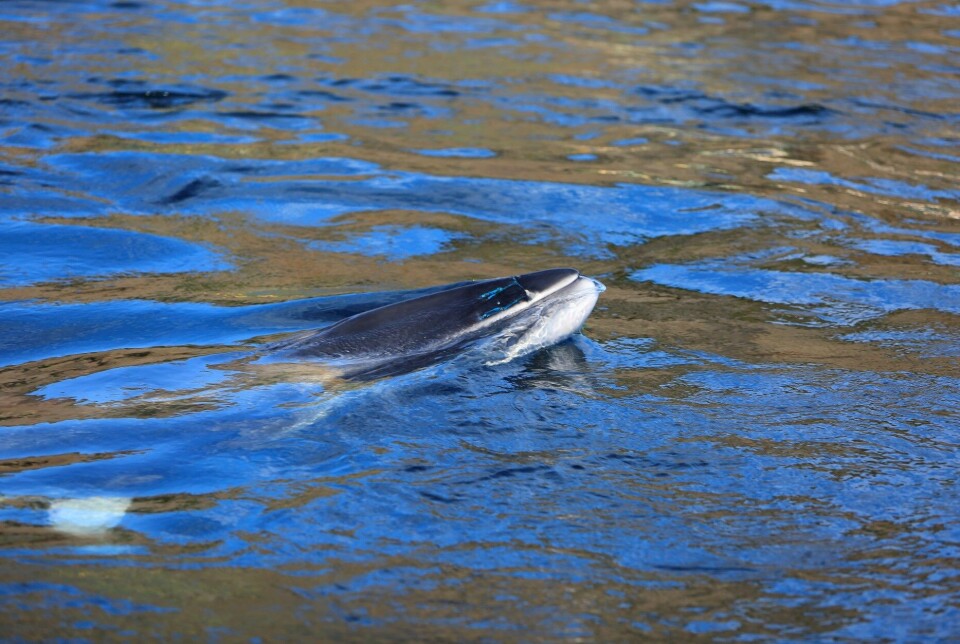THIS CONTENT IS BROUGHT TO YOU BY the Norwegian Defence Research Establishment - read more

For the first time, baleen whales have had their hearing tested: They can hear more than we think
The first successful hearing tests ever conducted on baleen whales took place in Lofoten in June. Researchers are surprised by how well the whales can hear the noise created by humans.
The international team or researchers collecting important measures of hearing in baleen whales have concluded their third field season in Norway.
They now have data on the hearing abilities of two young female minke whales (Balaenoptera acutorostrata).
- Related: How to measure a whale's hearing
Capable of hearing high frequencies
For the first whale, the team collected the first auditory brainstem response (ABR) in any minke whale. The procedure is similar to hearing tests regularly performed on newborn human babies.
For the second whale, the team collected both the ABR and information on the frequency range of hearing, i.e., the frequencies the whale can hear.
The results were surprising. The researchers found that minke whales have a much higher frequency limit for hearing than previously assumed based on their ear anatomy and the frequencies at which they vocalise.
Tested like dolphins
The non-invasive hearing tests were conducted in the same way as the tests regularly performed on dolphins and porpoises. Sensors were placed on the surface of the skin using suction cups that allowed the whale’s brainwaves to be recorded when it heard a sound played by the researchers.
Satellite telemetry has shown that both whales have continued their normal behaviour following the studies.

This year's experiments were concluded on June 30th. The researchers hope to collect data from more whales next summer.
Saved from a painful death
The team was particularly pleased that they were able to assist the first whale, which had a fishing net entangled around its upper rostrum.

It was clear that the whale had been entangled for some time; tissue had grown around the netting, which was cutting into the animal’s rostrum.
The team was able to successfully remove the entanglement. Without their intervention, the whale may not have survived.

This article is produced and financed by the Norwegian Defence Research Establishment
This content is created by the Norwegian Defence Research Establishment's communication staff, who use this platform to communicate science and share results from research with the public. FFI is one of more than 80 owners of ScienceNorway.no. Read more here.
More content from FFI:
-
What kind of food is best for soldiers?
-
This Norwegian invention can save the life of a person buried in an avalanche
-
The first season of the minke whale hearing project has ended
-
Norway's new satellite will improve the monitoring of ship traffic from space.
-
Dutch-Norwegian collaboration on nanosatellites
-
Planning war: Researchers are creating a digital war game to replace todays physical maps, tables and pencils




































